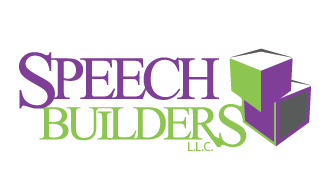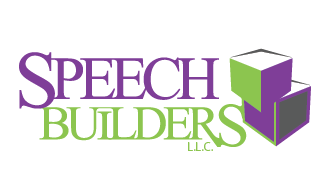I must first start this post with an apology I did not mean for it to be so long between posts! Things just got so incredibly busy but this was neglected and for that I apologize I’ve missed this doing this very much and I’ve determined in my heart that I will make time for it because I enjoy it. Our first post is going to be from a guest blogger, Keri Vandongen, R-SLP, S-LP. She has a private practice in Canada and she has come up with 5 truly awesome ways to create consistent speech and language practice time at home. I happen to come across this particular blog late last fall and I was so impressed with it I had to share it with all of you: As you know, your child’s speech-language therapy program works best when your child targets his/her goals and strategies during our sessions, AND when you practice these goals using strategies or cues that are effective and easy to do.
Who has time to practice everyday when your family life is already maxed out with activities, therapy appointments, homework, daily routines, exercises and so much more? UGG!!
I do understand and I’m always willing to listen to your suggestions too.
Coming up with ways to save you time or to practice on the go is at the top of my mind.
Until I come up with better solutions, I’ve shared 5 TOP Time-Saving Hacks below that I’ve wracked my brain over, and discovered from other SLPs and busy parents:)
5 Time-Saving Hacks for Home Practice
Time-Saver #1:
Prioritize Home Practice
- Write down the speech-language goals your child is currently working on and post these on your fridge or family bulletin board.
It’s best to work on about 3 goals at one time.
Ask your therapist to help prioritize your 3 current goals and when to switch goals.
- Also write down the helpful strategies or cues that every practice member can use.
*I don’t want you to overwhelm yourself or your child. Decide when you’ll work on each goal at one time. See Time-saver #2.
Time-Saver #2:
Make a Plan for 10 to 15-minutes Every Day
Post this plan on your fridge or family bulletin board.
- Speech-language carryover progress is best when you spend 3 to 5 minutes at a time, 3 times a day with your child practicing.
- Write down 5 daily routines when you could practice during.
Some examples include sharing stories, bathroom routines, mealtime, leisure time, folding laundry, chopping veggies, cleaning up, dusting, ironing. (Ha!)
- Note 5 other times when you could practice.
Some possible ideas are waiting in line at the supermarket / grocery store, before your other kids’ sporting events or activities begin, while going for a walk, at a restaurant, waiting in the car for long lights, walking to school, waiting for the bus, before a movie begins, taking your dog to the off-leash park, while playing board games, in front of a bathroom or portable mirror, after watching a movie or reading a book to re-tell it, riding or flying on public transportation, to showoff with someone has come for a visit.
Your creativity will spark after these examples:-)
Time-Saver #3: (Here comes my best tip for YOU!…)
Form a Speech Practice Team
- Come up with 3 to 5 people who shall be on your “Speech Practice Team” for your child and not just “Team Mom”.
- Your team members could be a spouse, older sibling, nanny, babysitter, aunt, neighbor or grandparent, school volunteer, high school or college student looking for volunteer experience with kids.
- ***It’s a great option to arrange for FaceTime or Skype calls with practice team members and your child.
Bonus Win:) Your child would be busy during these calls freeing you up for other family or household tasks.
Time-Saver #4:
WOWs = Words of the Week
- Choose 5 functional words and phrases that have your child’s speech-language goals and that your child often says.
- This could be names of favorite toys, popular activities, TV shows, video games, good friends, family members or pets or slang expressions.
Have FUN with these words and phrases that your child really wants to learn to say.
Time-Saver #5:
Praise Speech-Language Success
- Several times a day, when you hear your child correctly say or use their speech-language goals, offer genuine praise, i.e. “That was really clear!”, “You carefully said …!”, “I understood you!”, “Look at you improving!”.
When you praise a behavior, that behavior increases!
- *Avoid the temptation to correct your child. The research doesn’t show that this helps and kids don’t seem to like this approach:(
To help you out a bit more, I do have a simple handout for you to create your plan to accelerate speech therapy progress.
For this handout, click on Accelerate Speech Therapy Progress.
The link for this handout is https://goo.gl/2BiPrt.
~Keri
Keri Vandongen, R.SLP, S-LP (c)
Keri is a speech-language therapist (SLP) who loves having speech fun with kids and connecting with their families. She created Speech Party to listen to, collaborate with and support parents who are practicing speech so it can be fun and easier to carryover speech-language goals.
Come visit http://myspeechparty.com/fun-blog for interactive videos, stories with take-aways and speech-language activity and toy tips!
*For more information check out our website: www.speechbuilders.org.















Leave A Comment
You must be logged in to post a comment.